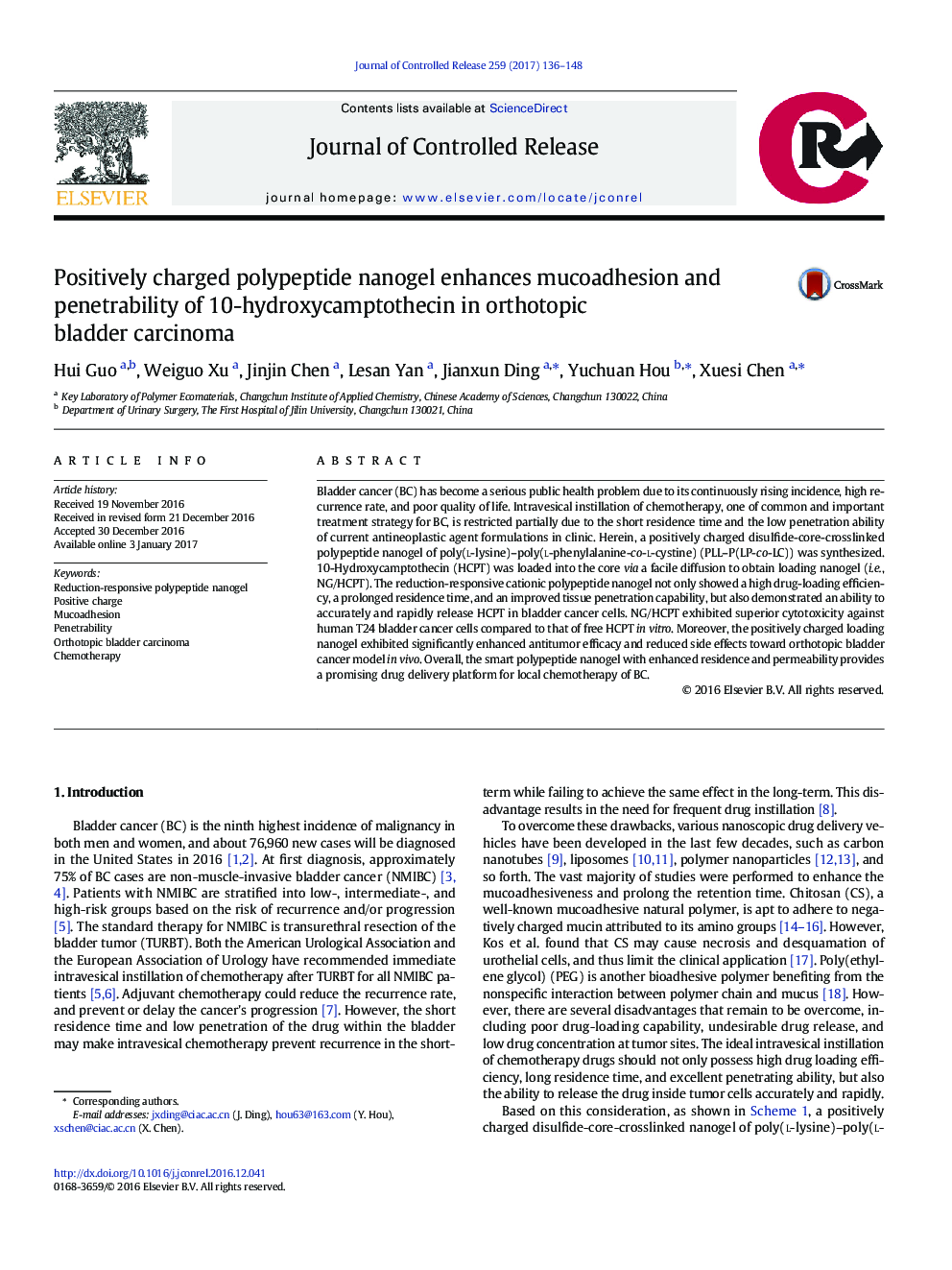| Article ID | Journal | Published Year | Pages | File Type |
|---|---|---|---|---|
| 5433594 | Journal of Controlled Release | 2017 | 13 Pages |
Bladder cancer (BC) has become a serious public health problem due to its continuously rising incidence, high recurrence rate, and poor quality of life. Intravesical instillation of chemotherapy, one of common and important treatment strategy for BC, is restricted partially due to the short residence time and the low penetration ability of current antineoplastic agent formulations in clinic. Herein, a positively charged disulfide-core-crosslinked polypeptide nanogel of poly(l-lysine)-poly(l-phenylalanine-co-l-cystine) (PLL-P(LP-co-LC)) was synthesized. 10-Hydroxycamptothecin (HCPT) was loaded into the core via a facile diffusion to obtain loading nanogel (i.e., NG/HCPT). The reduction-responsive cationic polypeptide nanogel not only showed a high drug-loading efficiency, a prolonged residence time, and an improved tissue penetration capability, but also demonstrated an ability to accurately and rapidly release HCPT in bladder cancer cells. NG/HCPT exhibited superior cytotoxicity against human T24 bladder cancer cells compared to that of free HCPT in vitro. Moreover, the positively charged loading nanogel exhibited significantly enhanced antitumor efficacy and reduced side effects toward orthotopic bladder cancer model in vivo. Overall, the smart polypeptide nanogel with enhanced residence and permeability provides a promising drug delivery platform for local chemotherapy of BC.
Graphical abstractDownload high-res image (314KB)Download full-size image
